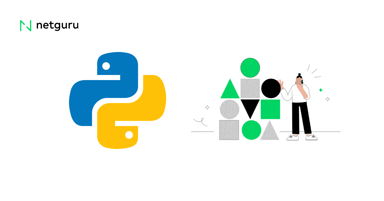Exploring Django in 2023: What Is It and What Is It Used For?

The secret lies in their use of Django, a powerful and versatile web framework that has taken the development world by storm. In this blog post, we’ll explore the ins and outs of Django and how it can revolutionize the way you build web applications.
Key Takeaways
-
Django is an open-source web framework based on Python that simplifies development and offers enhanced security.
-
It has key features like rapid development, scalability, and comprehensive security measures.
-
There’s a large community of developers with resources to help you learn Django & build amazing web apps!
Understanding Django
Django is an open-source web framework built on the Python programming language, a widely-used and versatile language. The Django framework simplifies the process of building web applications by providing a set of tools and libraries that enable rapid development, enhanced security, and scalability. The Django Software Foundation is responsible for maintaining and advancing this powerful web framework.
Django serves as an optimal choice for projects ranging from content management systems and social media websites to machine learning platforms.
Django Web Framework
At its core, the Django Web Framework is a collection of tools and libraries designed to streamline the development of web applications. It includes:
-
A powerful Object Relational Mapper (ORM) for database management
-
URL routing for handling user requests
-
An in-built templating system for rendering dynamic web pages
Django allows you to concentrate on your web app’s functionality, eliminating the need to deal with complex web server configurations and security protocols.
Relationship with Python
Django’s close relationship with Python is one of its key strengths. The framework is built on top of Python, which is known for its clean, pragmatic design and ease of use. The strong foundation on Python allows for the use of its extensive libraries and packages in Django applications, simplifying the process of building powerful, feature-driven web applications.
Key Features of Django
Django has quickly gained popularity due to its impressive set of features that help developers create robust web applications. Among these features are rapid development, enhanced security, and scalability.
Rapid Development
One of Django’s key selling points is its ability to support rapid development. Its features include:
-
Pragmatic design
-
Extensive libraries
-
Quick web application development
-
High quality
-
Strong security measures
This facilitates faster project initiation and efficient idea iteration, contributing to an improved final product.
Security
Django takes security seriously, with built-in measures designed to protect against common web vulnerabilities such as SQL injection, cross-site scripting, and cross-site request forgery.
The framework also includes a secure user authentication system for managing user accounts and passwords, ensuring that your web application remains safe from potential threats.
Scalability
Django’s architecture is designed to support both small and large-scale projects, making it a scalable solution for web applications of all sizes. Its wide range of features includes:
-
Third-party libraries for web servers
-
Caching
-
Performance management
-
Clustering
-
Balancing
These features ensure that your application can grow and adapt to increasing demands while maintaining optimal performance.
Django Components
To build web applications with Django, developers need to understand its key components, which include the Model-View-Template (MVT) architecture, URL routing, and templates.
Model-View-Template (MVT) Architecture
Django’s MVT architecture is a variation of the popular Model-View-Controller (MVC) framework and helps to separate data, user interface, and control logic for better organization and maintainability.
-
Models define the data structure and relationships
-
Views handle user requests and generate appropriate responses
-
Templates manage the presentation of web pages, allowing for dynamic content generation.
The MVT architecture is a great way to keep your code organized and maintainable. It
URL Routing and Views
In Django, URL routing and views play a crucial role in processing user requests and generating appropriate responses. The framework uses a URL mapper to define the relationship between routes and view functions, ensuring that the correct view is called when a specific URL is requested.
This allows developers to engage in web development, creating dynamic web applications that can handle a variety of user interactions and deliver personalized content based on user inputs and preferences.
Templates and Rendering
Django uses templates to manage the presentation of web pages, allowing developers to create dynamic HTML content that can change based on user inputs or other variables. With Django’s built-in Django template language, you can create reusable HTML templates, stored as an HTML file, that include placeholders for dynamic content, which are filled in with data when the page is rendered.
This allows you to build entire web app applications that can easily adapt to changing data and user preferences while maintaining a consistent user interface.
Creating a Django Project
To get started with Django, you’ll first need to create a new project. This involves installing the framework, setting up a virtual environment, and configuring the project structure.
Installation and Virtual Environments
Before installing Django, you’ll need to have Python installed on your system. After installing Python, a package manager such as pip can be used to install Django and establish a virtual environment for your project.
Virtual environments are isolated Python environments that let you install and use different versions of Python and its packages without impacting the system-wide installation. This ensures a clean and isolated development environment for your Django projects.
Project Structure and Configuration
Upon setting up Django and a virtual environment, a new Django project can be initiated with the command django-admin startproject my_project_name. This will generate a project directory with several files and folders, including a settings.py file for configuring your project, a manage.py file for running management commands, and an app directory for storing your application code.
From here, you can start building your web application by defining models, creating views and templates, and configuring URL routing.
Building a Sample Application
To better understand the Django framework, let’s walk through the process of building a sample application. This will involve defining models, creating views and templates, and integrating with the Django admin interface.
Defining Models
Models in Django are the foundation of your web application, defining the data structure and relationships for your application’s database. To create a model, you’ll need to define a Python class that inherits from Django’s models. The model base class specifies fields and their attributes to represent the columns in your database table.
Once your models are defined, you can use Django’s built-in ORM to interact with the database using Python code instead of writing SQL queries.
Creating Views and Templates
With your models defined, the next step is to create views and templates for handling user requests and generating dynamic web pages. Views in Django are Python functions that manage user requests, interact with the database via models, and generate HTTP responses.
To render dynamic content, you’ll need to create templates using Django’s template language, which allows you to include placeholders for data that will be filled in when the page is rendered.
Integrating with Django Admin
One of the powerful features of Django is its built-in admin interface, which provides a convenient way to manage application data and user permissions. To integrate your models with the Django admin interface, you’ll need to create a ModelAdmin class for each model and register it with the admin.site object.
Once registered, your models will be accessible through the Django admin dashboard, allowing you to create, update, and delete records in the database with ease.
Successful Implementations of Django
The successful implementation of Django in various popular web applications can be attributed to its versatility and robustness. Some notable examples include Instagram, Pinterest, and other major platforms.
Instagram, the popular photo and video sharing social network, utilizes Django for its web app functionality and performance. By leveraging Django’s rapid development capabilities and extensive libraries, Instagram is able to deliver a seamless user experience to millions of users worldwide.
Pinterest, the popular visual discovery engine, relies on Django to handle large amounts of media data and maintain a user-friendly interface for its millions of users. Django’s scalability and performance make it an ideal choice for handling Pinterest’s vast amount of content and user interactions.
Other Notable Examples
In addition to Instagram and Pinterest, other notable examples of successful Django implementations include Mozilla, The Washington Post, and Bitbucket. These instances demonstrate the adaptability of Django and its proficiency in managing diverse web applications, from widely-used web browsers and news websites to version control systems.
Django Ecosystem and Community
A plethora of resources are available in the Django ecosystem and community for developers aiming to gain proficiency in the framework. Some of these resources include:
-
Open-source development projects
-
Third-party packages and libraries
-
Online tutorials and documentation
-
Community forums and discussion groups
With these resources, you can access a wealth of knowledge and tools to help you build amazing web applications with Django.
Open Source and Active Development
Django is an open-source framework, meaning its source code is freely available for anyone to view, modify, and improve. This leads to a high degree of transparency, collaboration, and innovation within the Django community.
The framework is also actively developed by a large community of contributors, ensuring a sustainable and up-to-date web framework for your projects.
Third-Party Packages and Libraries
The Django community offers a wide range of Django packages and libraries that can be used to extend the functionality of your Django applications. These packages are created by developers outside of the Django core team and can provide additional features and capabilities not included in the base framework.
By leveraging these third-party packages and libraries, you can save time and effort during the development process, and focus on building the core functionality of your application.
Learning Resources and Tutorials
There are numerous learning resources and tutorials available for developers looking to learn Django. Some options include:
-
Online courses like Python Django Dev To Deployment on Udemy and Django for Everybody on Coursera
-
Books on Django development
-
YouTube tutorials on Django
-
Attending DjangoCon or local Meetup events
With these resources, you can use Django to master it and build amazing web applications.
Summary
Django is a powerful and versatile web framework that can revolutionize the way you build web applications. With its rapid development capabilities, enhanced security, and scalability, Django is an ideal choice for projects of all sizes. By leveraging the wealth of resources, third-party packages, and active community support, you can create amazing web applications that stand the test of time. So, what are you waiting for? Dive into the world of Django and start building your dream web application today!














-873149-edited.jpg?width=50&height=50&name=Tomaszuk%20Daniel%201%20(2)-873149-edited.jpg)




